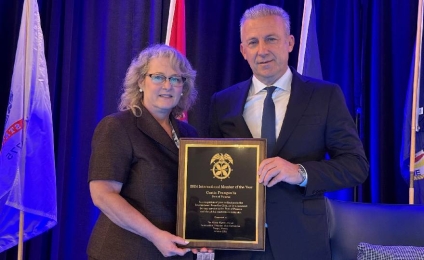Designers, builders and owners can all benefit from a move into the third dimension, writes Dan Cronin, VP Standards and Digital Class, ABS.
Vessel designers and shipyards are increasingly looking for ways to innovate and adopt digital tools in support of efficiency gains. It’s a trend recognised by ABS and one we have been supporting though initiatives to streamline the approval workflow process for class and client.
At present close to a dozen ABS clients are engaged in pilot projects for class approval of vessel designs using 3D drawings for which we are providing support and feedback.
We expect 3D models to replace much of the current 2D drawings but before that happens, designers and shipyards need to achieve a level of confidence in the process. Among other issues, these pilot projects have identified where 2D drawings must be produced to accompany the 3D model.
As part of a pilot project program, ABS and Crowley Maritime Corporation’s Jensen Maritime used 3D Computer-Aided Design (CAD) models to support the class design review process. Focused on tug and offshore support vessel designs, the project used a detailed 3D model environment integrated with the ABS classification processes.
The work undertaken with Crowley nearly two years ago has demonstrated how a flexible approach to the application of 3D drawings in a trial workflow can yield a process that class and client are comfortable with.
One of the challenges has been to navigate the range of CAD software used by designers and shipyards and it’s been essential to the pilots that ABS adopt a ‘CAD-agnostic’ approach which adapts to the client process.
Whether adoption of 3D drawings requires a fundamental change of process or an adaptation depends on the designer’s current process; some already work in 3D but produce 2D drawings because that is what is required so for them the change is not great. For others who have yet to embrace 3D it creates some challenges – though it should be stressed that clients can continue to provide drawings in 2D and ABS intends to support both formats in future.

From a designer’s point of view the benefit of moving from 2D to 3D drawings is immediate and substantial. Some designers quote time savings of as much as 15-25% where they already work in 3D, as this can eliminate the need for 2D drawings.
It is also critical to consider how a shipyard will be affected since facilities will likely be at different levels of technology adoption. Some are still very much paper-based on the shop floor. We expect that some will begin to employ more tech such as laptops or tablets to view and work with 3D drawings if they choose to move beyond 2D drawings.
Even if shipyards are not ready to retire 2D drawings entirely there is still a net benefit in the designers providing renderings in 3D as this can reduce the number of versions that need to be maintained.
Shipyards that adopt the technology can also see benefits quickly. One US yard reported time saved in training their craftsmen involved with welding and fit-ups as they found it quicker and easier to work with 3D models.
Design approval represents one end of the process we expect to provide end to end solutions for more clients. Earlier this year, in an industry first, ABS completed a pilot project that used 3D digital models for class surveys. The pilot with San Diego-based NASSCO saw surveyors use 3D digital models instead of traditional 2D drawings for the simulation of new construction surveys on several steel blocks.
ABS has also worked with Flag States to ensure they, together with shipowners, are engaged with the process, since the resulting drawings need to be available to them as well as the crew onboard. Our discussions with Flag States indicate that many will be accommodating to 3D drawings so long as they can have access when required without themselves making large investment software and hardware.
How quickly 3D drawings will be adopted across the industry is hard to predict. Progress has been slower than expected but the first live projects should be in place before the end of 2020 and could rise to 50% of projects using 3D submittals by 2024.
The pilot projects with designers and shipyards have laid the groundwork on 3D model based class. The next task will be engaging with more vessel owners to demonstrate that they can access the required drawings and documentation, both ashore and onboard, to comply with IACS and IMO requirements.
*VP Standards and Digital Class, ABS










